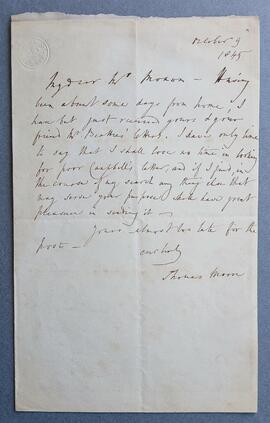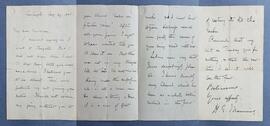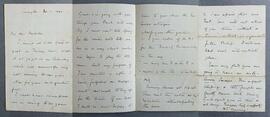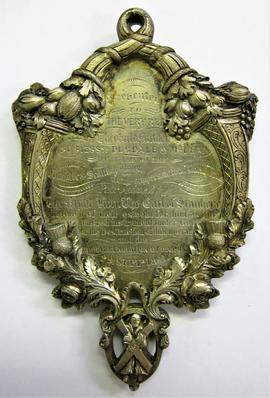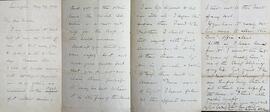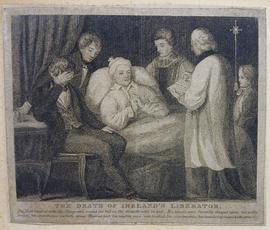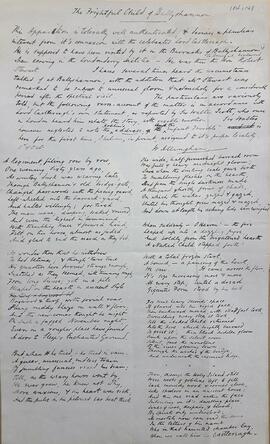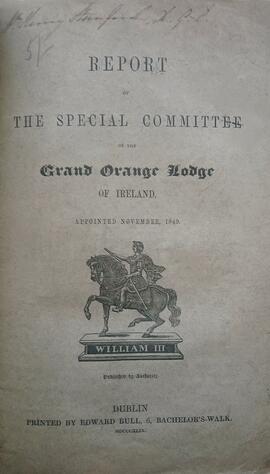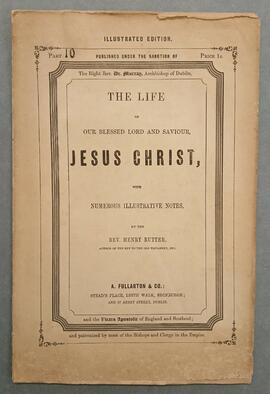A letter from Thomas Moore to [Edward] Moxon. Moore’s promises to search ‘for poor Campbell’s letter’ and will send the same to him.
A letter from Rev. Henry Edward Manning to [Rev.] Milliken.
A letter from Anna Maria Hall to Mrs Smith mostly referring to friends and acquaintances and personal news. Hall also writes ‘You cannot my dear Mrs Smith fancy that we are Repealers – Repeal I look upon as a sheer and most dangerous insanity – impossible and destructive – but in every way would I place the Roman Catholic in an equality with the Protestant – if we expect him to obey the same laws, we have no reason to deny him the same rights as ourselves’.
A letter from Rev. Henry Edward Manning to [Rev.] Milliken.
Silver memorial plaque presented to Fr. Theobald Mathew OSFC. The inscription reads:
‘Presented to the Very Rev. Theobald Mathew by Messrs Dugdale and McClean in the name of the Catholic and Scottish Union for the Suppression of Intemperance / Patronized by the Right Hon. The Earl of Stanhope in token of their esteem for him as the honoured instrument under God for the Destruction of Intemperance and the Moral Renovation of Mankind / 29th Sept. 1847’.
The obverse shows a man and woman either side of a shield. The man bears a banner with the words ‘sobriety’. The woman bears a banner with the words ‘Domestic Comfort’. The shield is flanked with a ribbon with the words ‘Peace on Earth and Good Will to Men / Be Thou Faithful to Death’.
A letter from Rev. Henry Edward Manning to [Rev.] Milliken.
A lithograph depicting the death of Daniel O’Connell in Genoa, Italy, on 15 May 1847. The original caption reads ‘The Death of Ireland’s Liberator / The Vicar General with the Clergy were round his head as the prayers were recited. His hands were fervently clasped upon his noble Breast, his appurtenance perfectly serene. When at last his mighty voice was hushed, his countenance, his hands responded to the prayers’.
A poem by William Allingham titled ‘The Frightful Child of Ballyshannon’ and dated 1 October 1849. As noted in Allingham’s introduction, the poem refers to a story that a ghostly apparition (taking the form of a child) haunted Robert Stewart, better known as Lord Castlereagh (1769-1822), a leading Anglo-Irish statesman and politician, probably best remembered for his role in suppressing the 1798 Rebellion and in securing the passage of the Act of Union in 1800.
The verse recounts a local tradition that Stewart was visited by the spectre while inspecting a military barracks in Ballyshannon in County Donegal. Allingham suggests that Stewart was subject to an ‘unusual gloom and melancholy for a period after the spectral visit’. Stewart was known to be susceptible to paranoia and later severe mental health problems. It is likely that Allingham’s poem was also influenced by the fact that Stewart was a widely reviled figure in Ireland.
The last stanza of Allingham’s poem reads:
Then, through the Holy Island still
Were nests of goblins left, to fill
Each mouldy nook & corner close,
Like spiders in an ancient house:
And this one read within the face
Intruding on it’s dwelling-place,
Lines of woe, despair, & blood;
By Spirits only understood;
As mortals now can read the same
In the letters of his name
Who in that haunted chamber lay,
When we call him — Castlereagh.
A copy of a pamphlet titled ‘Report of the Special Committee of the Grand Orange Lodge of Ireland / appointed November, 1849’ (Dublin: printed by Edward Bull, 6, Bachelor’s-Walk, MDCCCLIX [1849]).
A copy of a pamphlet titled ‘The Life of Our Blessed Lord and Saviour, Jesus Christ / with numerous illustrative notes / by Rev. Henry Butter / Part 10’ (Dublin: A. Fullerton, 67 Abbey Street, [c.1850]). The items appears incomplete.
